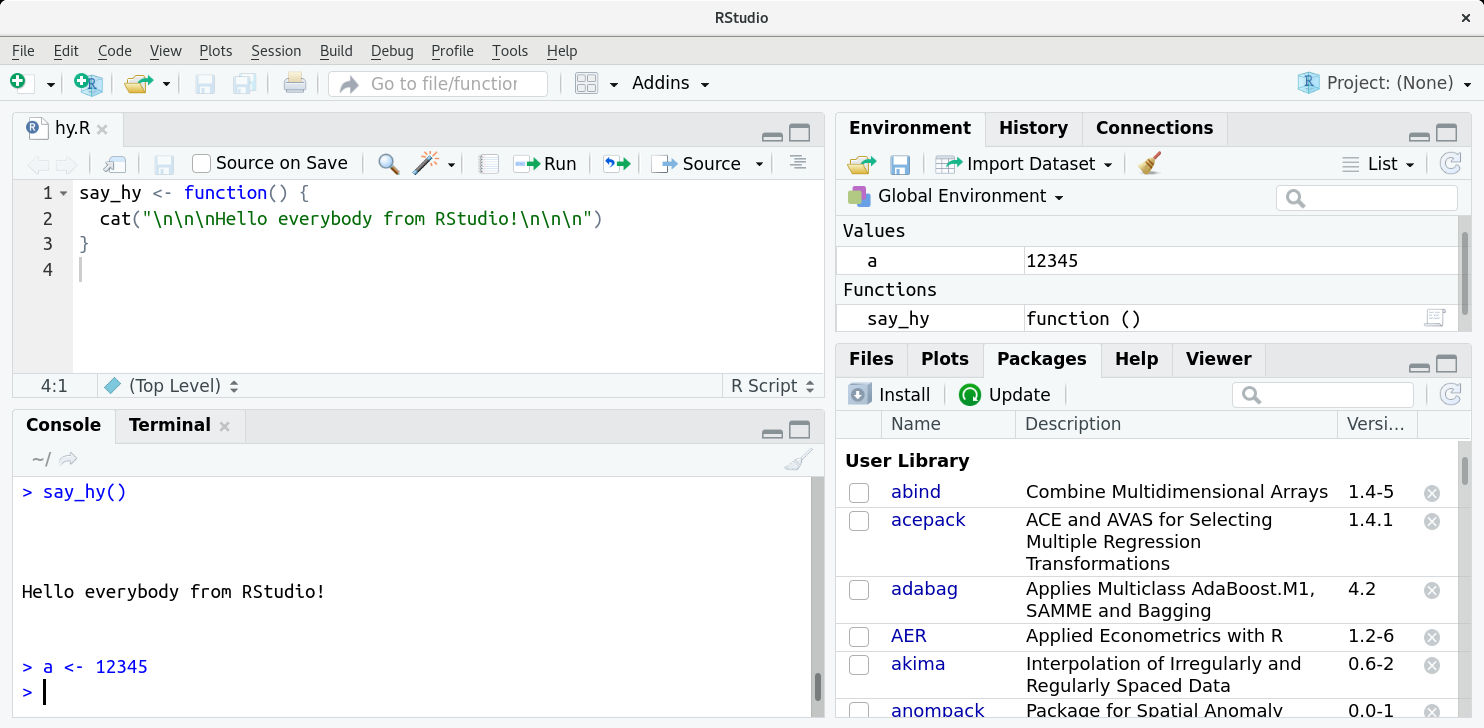

There also happen to be excellent video tutorial on RMarkdown (and other things) by the RStudio team on vimeo. Other options can be found in the cheatsheet available here. The height and the to scale plots in the final output. Width of the figure (in inches, for example)

Height of the figure (in inches, for example) ‘center’, ‘left’, ‘right’ alignment in the knit document The R function name that will be used as a graphical device to record plots, e.g. devĪ number for knitr to use as the dots per inch (dpi) in graphics (when applicable).
Do i need r commander to install r studio code#
Knitr will reuse the results until the code chunk is altered. If TRUE, knitr will cache the results to reuse in future knits. If FALSE, knitr will not display any warning messages generated by the code. If FALSE, knitr will not display any messages generated by the code. If FALSE, knitr will not display any error messages generated by the code. If FALSE, knitr will not display the code in the code chunk but will show the resulting output from the code in the final document. If FALSE, knitr will run the chunk but not include the chunk in the final document. If FALSE, knitr will not run the code in the code chunk. Here are some of the more common ones we will use. In RMarkdown files you will see that the code chunks have several options that could be invoked. This can be done, after the package is loaded, via name_chunks(“myfilename.Rmd) If you forget, use the namer() package to assign names to every code chunk sans a name. Give every code chunk a unique name, whch can be a alphanumeric string with no whitespace. | You also have a spell-check use it to catch typos. Panes can be detached, and this is very helpful when you want another application next to the pane or behind it, or if you are using multiple monitors since then you can execute commands in one monitor and watch the output in another monitor.

You can customize the panes via Tools -> Global Options. This will make sure that the output shows up in the console or the plot window rather than in your working document. The one thing you should do now is to click the gear icon and ensure the following has a check-mark against it: “Chunk Output in Console”. The gear button allows you to tweak various options click on Output Options and explore the options therein. You can (and should) give unique name to code chunks so that you can easily diagnose which chunk is not working but more on R chunks later.Īllows you to run specific lines and/or R chunks Shows you are “live” documents running on the serverĪllows you to generate html/pdf/word documents that combine R commands with plain text, graphics, tables, etcĪllows you to insert a vanilla R chunk. Show you all graphics that have been generatedĪllows you to access the help pages for a package by typing in keywords Shows you files and folders in your current working directory, and you can move up/down in the folder hierarchy Shows you any databases/servers you are connected to and also allows you to initiate a new connection Shows you a running list of all commands issued to R Stores and shows you all the objects (data, lists, scalars, etc) created during a working session This is where commands are issued to R, either by typing and hitting enter or running commands from a script (essentially a file with the commands you want to execute) RStudio has more features than needed for this class but at minimum you need to recognize the few listed below. 9.3 Combining multiple plots in a single canvas.9.2 Highlighting and Marking Specific Elements.7.0.7 The National Survey on Drug Use and Health (NSDUH) Data.7.0.6 The USAID’s Demographic and Health Surveys (DHS).Census Populations With Bridged Race Categories 7.0.3 RWJF’s County Health Rankings Data.6.1.2 The Bureau of Labor Statistics (BLS) API.6.1.1 The Bureau of Eeconomic Analysis (BEA) API.6.1 Using Application Programming Interfaces (APIs).6 Data Acquisition with APIs and Other Means.



 0 kommentar(er)
0 kommentar(er)
